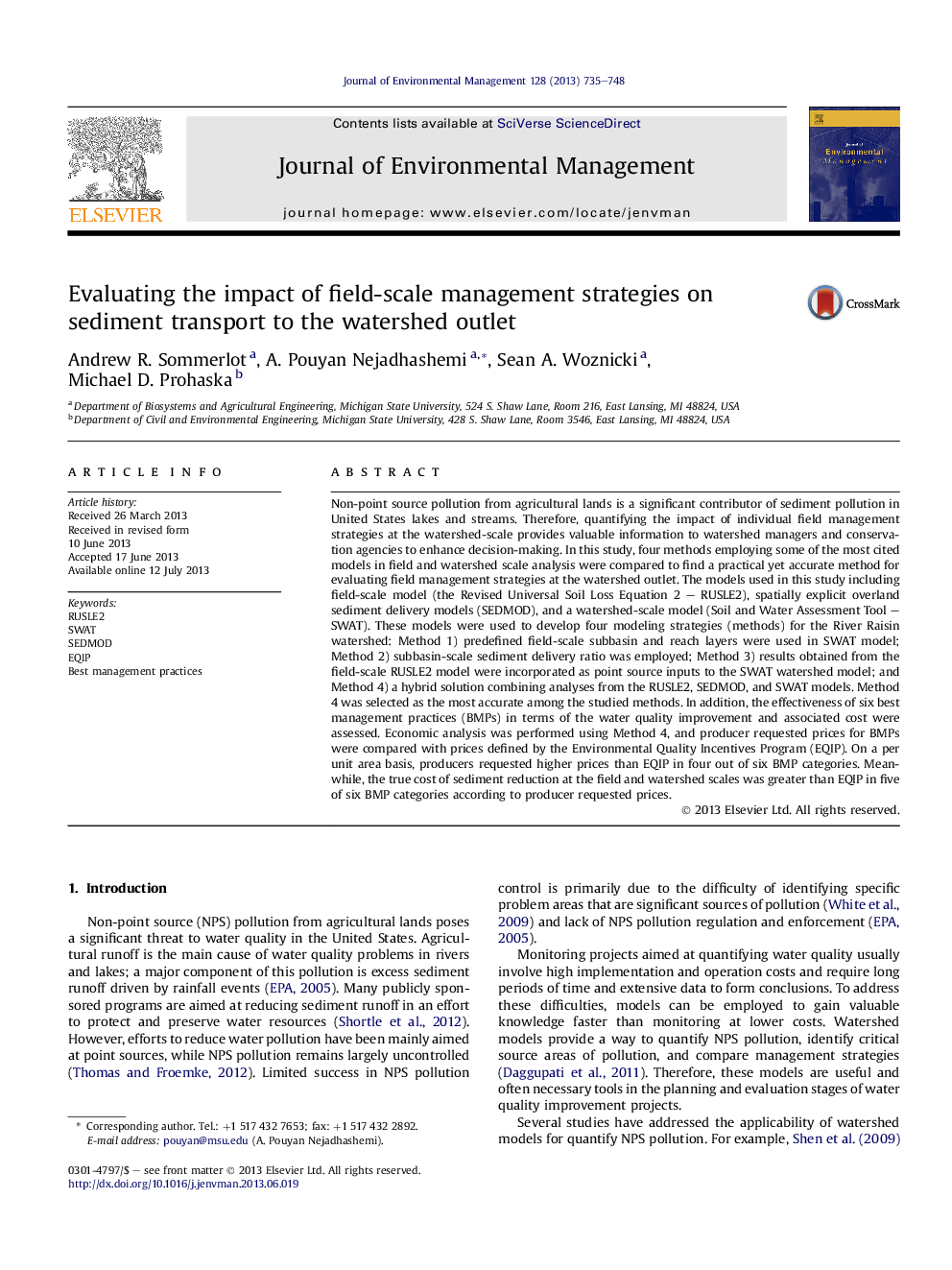| کد مقاله | کد نشریه | سال انتشار | مقاله انگلیسی | نسخه تمام متن |
|---|---|---|---|---|
| 7484448 | 1485284 | 2013 | 14 صفحه PDF | دانلود رایگان |
عنوان انگلیسی مقاله ISI
Evaluating the impact of field-scale management strategies on sediment transport to the watershed outlet
ترجمه فارسی عنوان
ارزیابی تأثیر استراتژیهای مدیریت در مقیاس در حوزه حمل و نقل رسوبی به خروجی حوضه
دانلود مقاله + سفارش ترجمه
دانلود مقاله ISI انگلیسی
رایگان برای ایرانیان
موضوعات مرتبط
مهندسی و علوم پایه
مهندسی انرژی
انرژی های تجدید پذیر، توسعه پایدار و محیط زیست
چکیده انگلیسی
Non-point source pollution from agricultural lands is a significant contributor of sediment pollution in United States lakes and streams. Therefore, quantifying the impact of individual field management strategies at the watershed-scale provides valuable information to watershed managers and conservation agencies to enhance decision-making. In this study, four methods employing some of the most cited models in field and watershed scale analysis were compared to find a practical yet accurate method for evaluating field management strategies at the watershed outlet. The models used in this study including field-scale model (the Revised Universal Soil Loss Equation 2 - RUSLE2), spatially explicit overland sediment delivery models (SEDMOD), and a watershed-scale model (Soil and Water Assessment Tool - SWAT). These models were used to develop four modeling strategies (methods) for the River Raisin watershed: Method 1) predefined field-scale subbasin and reach layers were used in SWAT model; Method 2) subbasin-scale sediment delivery ratio was employed; Method 3) results obtained from the field-scale RUSLE2 model were incorporated as point source inputs to the SWAT watershed model; and Method 4) a hybrid solution combining analyses from the RUSLE2, SEDMOD, and SWAT models. Method 4 was selected as the most accurate among the studied methods. In addition, the effectiveness of six best management practices (BMPs) in terms of the water quality improvement and associated cost were assessed. Economic analysis was performed using Method 4, and producer requested prices for BMPs were compared with prices defined by the Environmental Quality Incentives Program (EQIP). On a per unit area basis, producers requested higher prices than EQIP in four out of six BMP categories. Meanwhile, the true cost of sediment reduction at the field and watershed scales was greater than EQIP in five of six BMP categories according to producer requested prices.
ناشر
Database: Elsevier - ScienceDirect (ساینس دایرکت)
Journal: Journal of Environmental Management - Volume 128, 15 October 2013, Pages 735-748
Journal: Journal of Environmental Management - Volume 128, 15 October 2013, Pages 735-748
نویسندگان
Andrew R. Sommerlot, A. Pouyan Nejadhashemi, Sean A. Woznicki, Michael D. Prohaska,
